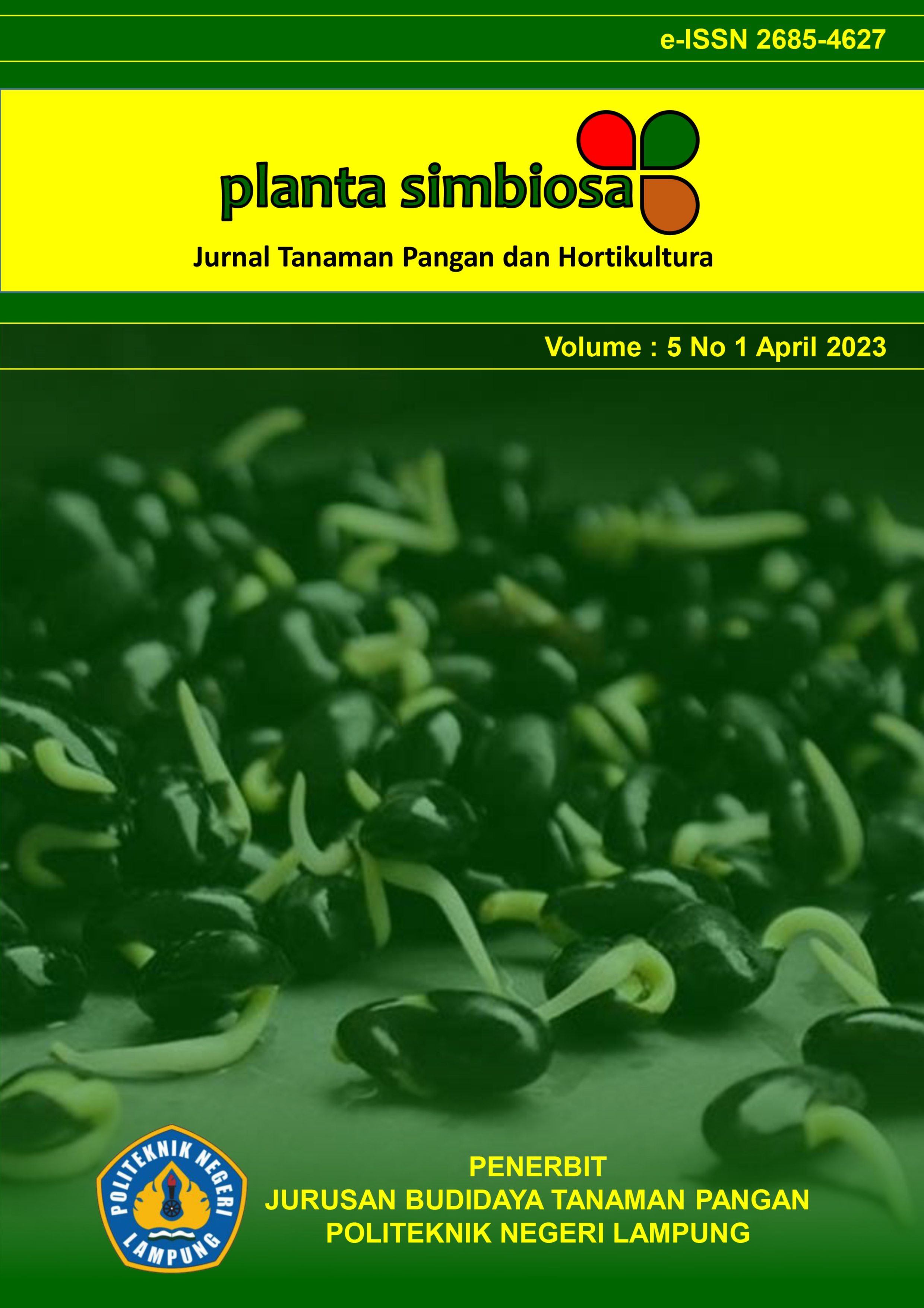Efectivity of Paraquat Dichloride Herbicide in Controlling Weeds of Rubber Plantation (Hevea brasiliensis)
DOI:
https://doi.org/10.25181/jplantasimbiosa.v5i1.2956Abstract
The presence of weeds in rubber plantations causes a decrease in productivity so it needs to be controlled. An effective and efficient method on a broad scale in terms of cost and time to control weeds is the chemical method using herbicides. One of the active ingredients of herbicides that can control rubber plantation weeds is paraquat dichloride. The purpose of this study was to determine the effective dose of paraquat dichloride in controlling rubber plantation weeds. This study used a randomized group design (RAK) with 6 treatments and 4 replications. The treatments consisted of herbicide application of paraquat dichloride at a dose of 310.5 g ha-1 (P1); 414 g ha-1 (P2); 496.8 g ha-1 (P3); 621 g ha-1 (P4), mechanical (P5), and control (P6). The results showed that: (1) paracuat dichloride herbicide at a dose of 310.5-621 g ha-1 effectively controlled total weeds and weeds per class; (2) paracuat dichloride herbicide at a dose of 310.5-621 g ha-1 resulted in changes in weed composition at 4-12 MSA; (3) application of paracuat dichloride herbicide at a dose of 310.5-621 g ha-1 did not cause poisoning in rubber plants.Downloads
Download data is not yet available.
Published
2023-04-28
How to Cite
Pratama Giraldi, R., & Rahmadi, R. (2023). Efectivity of Paraquat Dichloride Herbicide in Controlling Weeds of Rubber Plantation (Hevea brasiliensis). J-Plantasimbiosa, 5(1), 19-28. https://doi.org/10.25181/jplantasimbiosa.v5i1.2956
Issue
Section
Artikel








